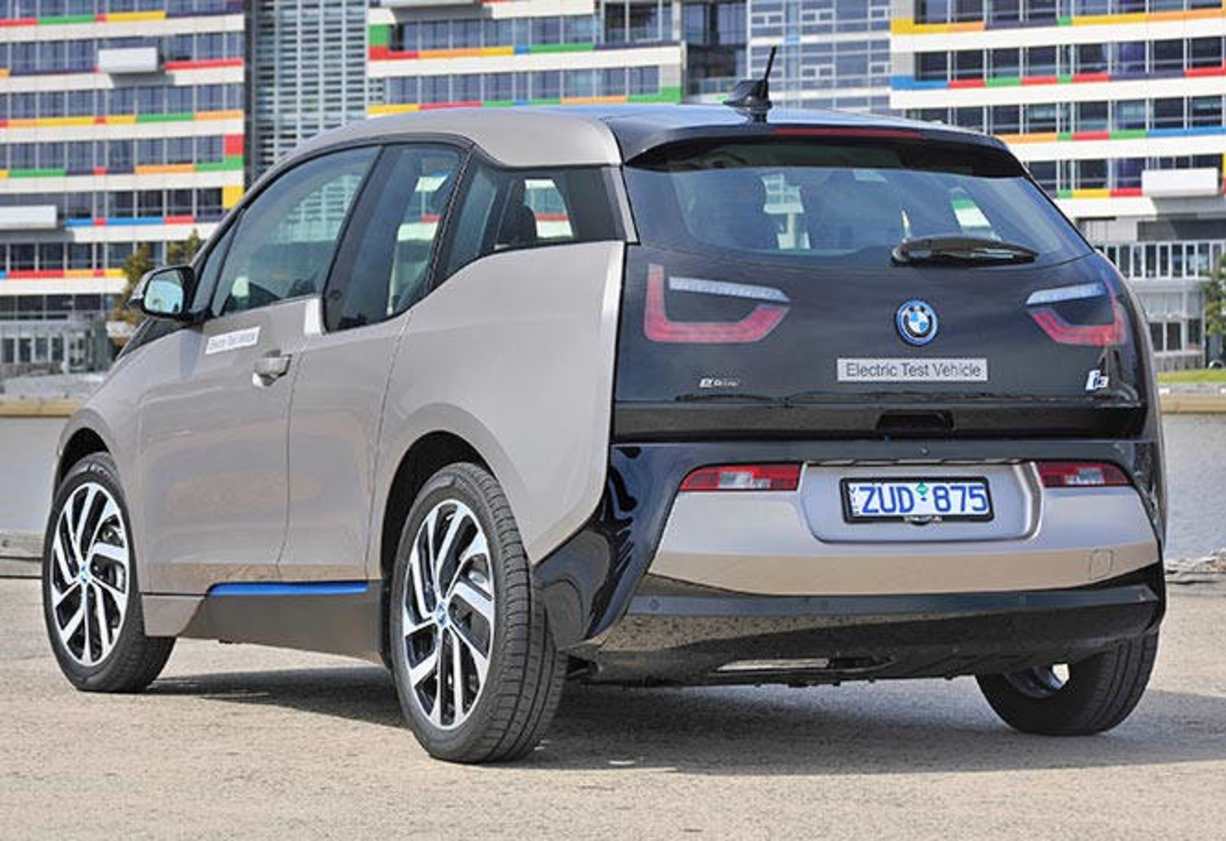BMW is about to launch its first mass-produced vehicle to run solely on electric power. The German company is normally in the forefront of technology, but surprisingly, in this instance is running behind the Japanese and Americans.
The first vehicle to come out of the new BMW i sub-brand, the i3 is a compact five-door hatch that uses a combination of carbon-fibre reinforced plastic and aluminium to keep the car's weight down to 1195 kg.
POWERTRAIN
Power comes from a lithium-ion battery pack mounted on the floor of the chassis rather within the cabin. While this pushes up the overall height of the car, giving it a semi-SUV look, it does provide a higher driving position.
The electric motor generates up to 125 kW of power and 250 Nm of instantaneous torque that's sent to the rear wheels. It allows the BMW i3 to get from standstill to 100 km/h in a sporty 7.2 seconds.
Range is quoted at between 130 and 160 km, however this can be increased up to around 200 km by using either the Eco Pro or Eco Pro+ modes, although these do impact upon the car's performance and air conditioning effectiveness.
By fitting an optional 647 cc two-cylinder rear-mounted petrol engine range can be further increased to around 300 km. The range-extender engine does not power the vehicle but is used solely to charge the batteries through an electrical generator. The tiny engine – it's sourced from a BMW Motorrad scooter – is located beneath the boot floor and adds 150 kg to the weight of the i3, so slightly reducing the battery-only range.
The range-extender would seem a natural fit for Australia's sprawling cities, indeed BMW Australia is considering including it as standard. A big advantage of a petrol range-extender is that it can be refuelled in a few minutes.
The batteries can be charged at home through a conventional 10-amp power socket (11 hours for a full charge) or a specially-installed BMW i Wallbox (six hours). Fast charging stations are still a rarity in Australian cities but will grow in time.
STYLING
We were able to examine and sit in, but not drive, a pre-production version of the i3 at BMW Australia's head office in Melbourne. The styling is quite distinctive with a sweeping rear roofline cleverly offset by a dip in the beltline at the base of the rear windows to improve outward visibility.
Entry to the back seats is through rear-hinged doors which can only be opened when the front doors are open. The resultant wide opening provides easy access and, with no B-pillar to intrude, will improve the driver's vision.
The traditional kidney grille clearly identifies the i3 as a BMW, although it is purely cosmetic – the range extender, where fitted, is cooled via a small radiator located next to the front wheels – and framed with a blue highlight which is continued on the door sills. U-shaped LED headlamps wrap around to the side of the car.
INTERIOR
Storage space is limited with 250 litres in the rear hatch area regardless of whether or not the range extender engine is fitted plus an additional 35 litres under the bonnet at the front of the car. With the batteries out of the way under the car the rear seatbacks can be folded flat to expand the available space to 1100 litres.
Another standout feature is the wheels which although large in diameter (19- or 20-inch) are quite narrow to improve the car's aerodynamics and reduce tyre drag on the road.
Four design options are available: Atelier, Loft, Lodge and Suite with a choice of six colours, all two-toned with a black band running from the bonnet across the roof to the bottom of the hatch.
INFOTAINMENT
Like the system we've seen previously in the Nissan Leaf the BMW i Remote App allows smartphone owners to remotely display information such as range and current battery charge status as well as adjusting the temperature of the interior before entering the car.
There are two monitors located on the dashboard, a small one in front of the driver that shows relevant charging and performance information and a larger (10.3-inch) one in the centre with the normal multimedia and navigation features.
The second model to come from BMW i will be quite different to the i3. Not only is the i8 a sports car but it is a plug-in hybrid combining a 1.5-litre petrol engine with a lithium-ion battery pack. We'll do a detailed report on the i8 closer to its arrival date.
PRICING
The BMW i3 is expected to go on sale in mid-2014, and the i8 towards the end of that year. They will only be sold through one selected dealership in each of the major capital cities, initially in Sydney, Melbourne and Brisbane to be followed by Perth, Canberra and Adelaide. Service will be available at most BMW dealerships.
Pricing and specifications will be provided closer to the i3's launch next year but as a guide prices in the United States start at $US42,000 and in Britain at around 30,000 Pounds. In both cases there is government assistance to encourage buyers towards environmentally friendly vehicles – sadly something in which Australia's civic leaders have shown no interest to date. The optional range-extender adds around $US4000.





.jpg)
.jpg)
.jpg)

_0.jpg)



.jpg)
 (1).jpg)










































.jpg)



.jpg)
.jpg)
.jpg)




